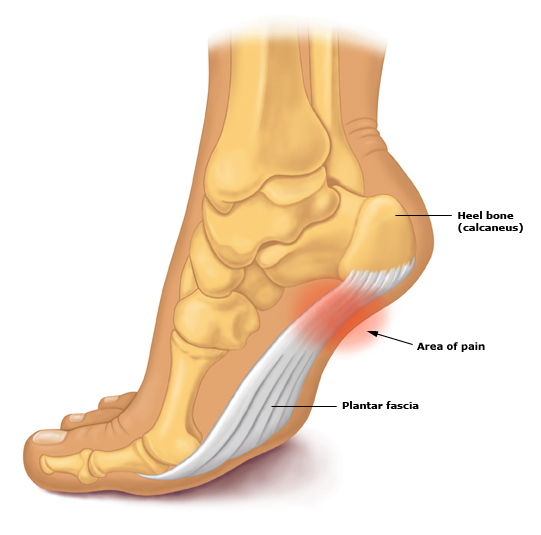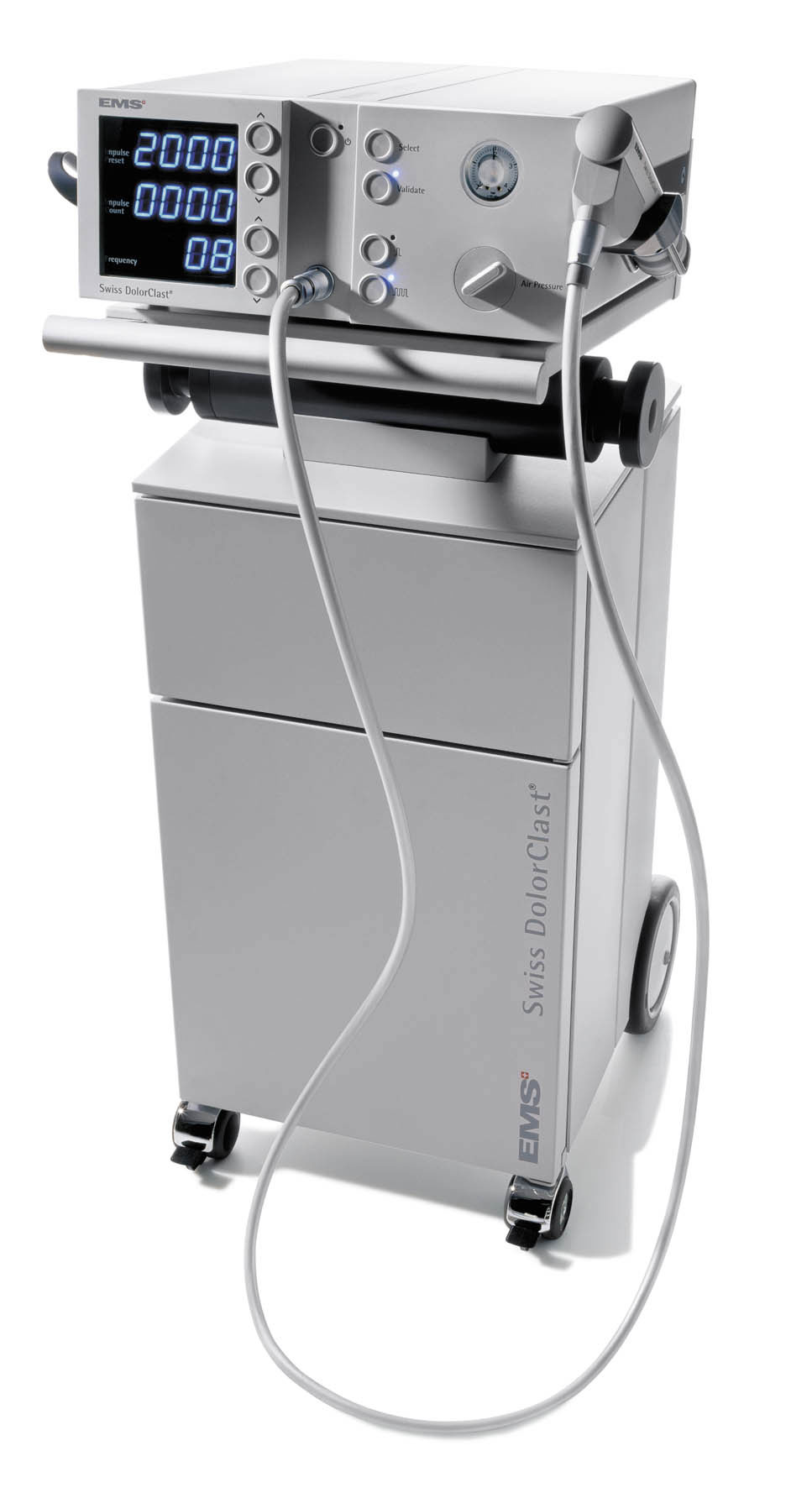This article presents a comprehensive overview of shockwave therapy and will be of help to anyone who is suffering from heel pain particularly and would like to know about the innovative treatment options available to them.
Contents
- Introduction to Extracorporeal Shock Wave Therapy (ESWT)
- How does shockwave therapy work?
- Are there different types of shockwaves?
- How is ESWT used to treat plantar fasciitis?
- Is shockwave therapy painful?
- How quickly will it work?
- How many sessions of ESWT treatment will I need?
- How effective is it?
- Is there any ongoing research in this area?
- What does NICE say about Extracorporeal Shock Wave Therapy?
- Will my insurance company pay for it?
- Can I pay for treatment myself?
- Can shockwave therapy be used for other conditions?
- Are there any potential complications?
Introduction to Extracorporeal Shock Wave Therapy (ESWT)
Shockwaves are pulses of energy that can pass through any material and travel at near supersonic speeds. Good examples are tremors from a distant earthquake that pass through the earth’s crust. The technology was first used in medicine as a method of breaking up kidney stones from outside the body. The energy of shockwaves is released when the wave passes through an area of sudden change in density. More recently it has been discovered that shockwaves can be used to promote healing, particularly in areas where tissues vary in density such as where a tendon or ligament attaches to bone. Shockwave therapy is also used to alleviate the condition plantar fasciitis, which is a common cause of heel pain. The plantar fascia is a strong fibrous band of tissue in the bottom of the foot which helps support its shape. It arises from the heel bone (calcaneus) and inserts into the toes. The heel bone is protected by a specialised pad of fat that cushions it when we stand. This also protects the attachment of the plantar fascia. The condition plantar fasciitis causes a sharp or stabbing sensation in the region of the heel typically when getting out of bed in the morning or from getting up from a chair after a period of rest.

How does shockwave therapy work?
It is fair to say that it is not clear how this therapy works but experimental models have shown that it has dramatic effects on various tissues. It promotes the growth of new blood vessels that may in turn promote healing and it also down-regulates many of the local factors that cause pain on nerve endings.
Are there different types of shockwaves?
Shockwaves can either be focused or non-focused. Focused shockwaves concentrate a large amount of energy onto a small area. This is how kidney stones are broken up. It is very painful and so patients have a general anaesthetic during treatment. Shockwave therapies for soft tissue conditions, such as plantar fasciitis, tend to use non-focused shockwaves, which cause much less pain but appear to be as effective. This does not require any form of anaesthetic.
How is ESWT used to treat plantar fasciitis?
A probe is pressed onto the tender area and shockwaves are pulsed through the foot. Usually 2500-4000 pulses are used and this takes a few minutes to administer. A connecting gel is used to promote the passage of energy from the probe through the skin. This is the same gel that is used on ultrasound probes.

Is shockwave therapy painful?
Extracorporeal Shock Wave Therapy is uncomfortable but not painful. The surgeon applying the probe will start with a very low level of energy and gradually increase this during treatment. The more energy you can tolerate during treatment the greater the chance of success.
How quickly will it work?
Shockwave therapy has an immediate pain relieving effect. This allows the surgeon to increase the energy used during a session of treatment and also allows you to go home feeling more comfortable. However the pain usually returns during the following 24 hours and then gradually dissipates over weeks to months.
How many sessions of ESWT treatment will I need?
Evidence suggests that three sessions of treatment one-two weeks apart is most effective.
How effective is it?
A recent study has found that scores of pain and function are improved by 72% three months following treatment and 85% after 12 months (1). In an older study good and excellent results were found in 57% of patients 6 months following treatment compared to 10% in the control group that did not receive shockwave therapy. Five years following treatment 58% of the control group had undergone surgery for the condition compared to 13% of the group that had received treatment (2).
A recent audit of the results from my clinic demonstrated that pain scores improved from 7.7 out of 10 to 2 out of 10 (10 being the worst pain imaginable and 0 being no pain) with three sessions of treatment. 83% of patients were able to return to their previous leisure activities or to perform their jobs more easily after treatment.
Is there any ongoing research in this area?
There are many studies being performed at present. A very exciting development in the UK is the ASSERT trial. This is a multicentre trial that has been established to test the effects of shockwave therapy on many conditions including plantar fasciitis. Patients attending my Clinic for Foot and Ankle Surgery will automatically be enrolled in the study.
What does NICE (National Institute of Clinical Excellence) say about Extracorporeal Shock Wave therapy?
The last guidance was published in 2009. It found no safety concerns. It suggested that evidence on its effectiveness was inconsistent at that time and recommended further investigation. The ASSERT trial is being conducted as a response to this.
Will my insurance company pay for it?
You should always check with your insurer whether they will cover the fees before starting the treatment. The majority of insurance companies will pay for shockwave therapy if you are part of the ASSERT trial. You should check this with your surgeon before starting treatment.
Can I pay for treatment myself?
You can pay for the treatment yourself and should check with your surgeon prior to treatment how much it will be.
Can shockwave therapy be used for other conditions?
Shockwave therapy is also effective in the treatment of Achilles problems and conditions affecting the knees, hips, elbows and shoulders.
Are there any potential complications?
Complications of shockwave therapy are very minor compared to injections and surgery. The treatment itself is uncomfortable and pain may increase transiently. The skin over the treatment area may redden or bruise slightly after treatment.
Direct Access to clinic for Shockwave Therapy or to ask a question
References
- Radial Extracorporeal Shock Wave Therapy Is Safe and Effective in the Treatment of Chronic Recalcitrant Plantar Fasciitis. Results of a Confirmatory Randomized Placebo-Controlled Multicenter Study, Gerdesmeyer et al, The American Journal of Sports Medicine, Vol. 36 No. 11
- Evaluation of low energy extracorporeal shockwave application for the treatment of chronic plantar fasciitis. Rompe et al JBJS 84A:335-341, 2002.







